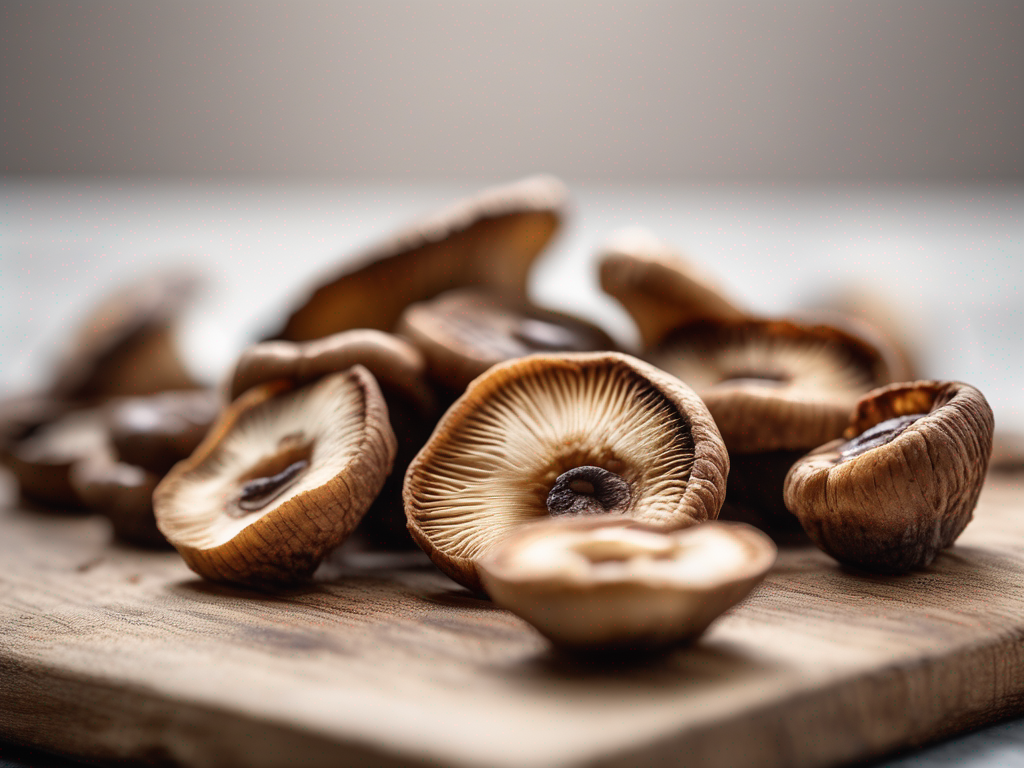
The Ultimate Guide to Storing Dried Shiitake Mushrooms
Get Your Free Food Safety Cheat Sheet
30 most common foods with instant answers. Print it and stick it on your fridge—completely free!
The Ultimate Guide to Storing Dried Shiitake Mushrooms
If you are a fan of [dried shiitake mushrooms](/food/dried shiitake mushrooms), you know that they can add a rich umami flavor to many dishes. However, one common issue that mushroom enthusiasts face is mold growth on dried shiitake mushrooms. Mold not only ruins the flavor and texture of the mushrooms but can also pose health risks if consumed. In this comprehensive guide, we will explore the optimal storage conditions for dried shiitake mushrooms to prevent mold and ensure their freshness. (Dried shiitake mushrooms)
Understanding Dried Shiitake Mushrooms
Before diving into storage tips, let's understand why dried shiitake mushrooms are prone to mold growth. Dried mushrooms have low moisture content, making them less susceptible to spoilage than fresh mushrooms. However, they can still develop mold if exposed to moisture or stored improperly. Mold thrives in warm, damp environments, making it essential to store dried shiitake mushrooms in a cool, dry place.
Why Mold Growth is a Concern
Mold growth on dried shiitake mushrooms not only affects their taste but can also lead to the production of mycotoxins, which are harmful compounds produced by certain molds. Consuming moldy mushrooms can cause food poisoning and other health issues. Therefore, it is crucial to prevent mold growth by following proper storage practices.
Optimal Storage Conditions for Dried Shiitake Mushrooms
To ensure the longevity and quality of your dried shiitake mushrooms, follow these storage guidelines:
1. Choose the Right Container
- Use airtight containers such as glass jars or resealable plastic bags to store dried shiitake mushrooms.
- Make sure the container is clean and dry before transferring the mushrooms to prevent moisture buildup.
2. Keep Them in a Cool, Dark Place
- Store dried shiitake mushrooms in a cool, dark pantry or cupboard away from direct sunlight and heat sources.
- Avoid storing them near the stove, oven, or other appliances that generate heat.
3. Monitor Humidity Levels
- Maintain a low humidity level in the storage area to prevent moisture absorption by the mushrooms.
- Consider using a dehumidifier in humid environments to keep the storage area dry.
4. Check for Signs of Mold Regularly
- Inspect the dried shiitake mushrooms periodically for any signs of mold growth, such as fuzzy spots or discoloration.
- Discard any mushrooms that show signs of mold to prevent contamination of the rest of the batch.
5. Rotate Stock Regularly
- Use the oldest dried shiitake mushrooms first to ensure freshness.
- Rotate your stock periodically to prevent the mushrooms from becoming stale or developing mold over time.
Additional Tips for Storing Dried Shiitake Mushrooms
In addition to the storage guidelines mentioned above, here are some extra tips to keep your dried shiitake mushrooms fresh and mold-free:
- Avoid moisture: Moisture is the enemy of dried mushrooms. Make sure the storage area is dry and well-ventilated.
- Use silica packets: Place silica gel packets in the container with the dried mushrooms to absorb any excess moisture.
- Label and date: To track the freshness of your dried shiitake mushrooms, label the container with the date of purchase or expiration.
Conclusion
By following the optimal storage conditions outlined in this guide, you can enjoy the rich, earthy flavor of dried shiitake mushrooms in your recipes without worrying about mold contamination. Remember to store them in a cool, dry place, check for signs of mold regularly, and use airtight containers to preserve their freshness. With proper storage practices, your dried shiitake mushrooms will stay flavorful and safe for consumption. (Dried shiitake mushrooms)
Related Posts
Here are some other articles you might find helpful:
Authoritative Food Safety References
These agencies and university labs inform every tip and health precaution we publish.
USDA FoodKeeper – Cold Storage Guidelines
Official refrigerator, freezer, and pantry timelines maintained by the U.S. Department of Agriculture.
Visit USDA FoodKeeperFDA Produce Safety Rule & Grower Guidance
Field-to-fridge handling practices that prevent contamination of fruits, vegetables, and leafy greens.
Visit FDA Produce SafetyCDC Foodborne Illness Prevention Hub
Surveillance-backed guidance on pathogens, symptoms, and steps to reduce foodborne illness risk.
Visit CDC Food SafetyUC Davis Postharvest Technology Center
University research detailing optimal storage atmospheres for produce after harvest.
Visit UC Davis PostharvestPenn State Extension – Home Food Preservation & Safety
Peer-reviewed extension bulletins on safe canning, chilling, and reheating practices.
Visit Penn State ExtensionGet Your Free Food Safety Cheat Sheet
30 most common foods with instant answers. Print it and stick it on your fridge—completely free! Want more? Upgrade to the complete guide with 70+ foods.
Scan your food directly and get instant safety info using our AI-powered camera feature.